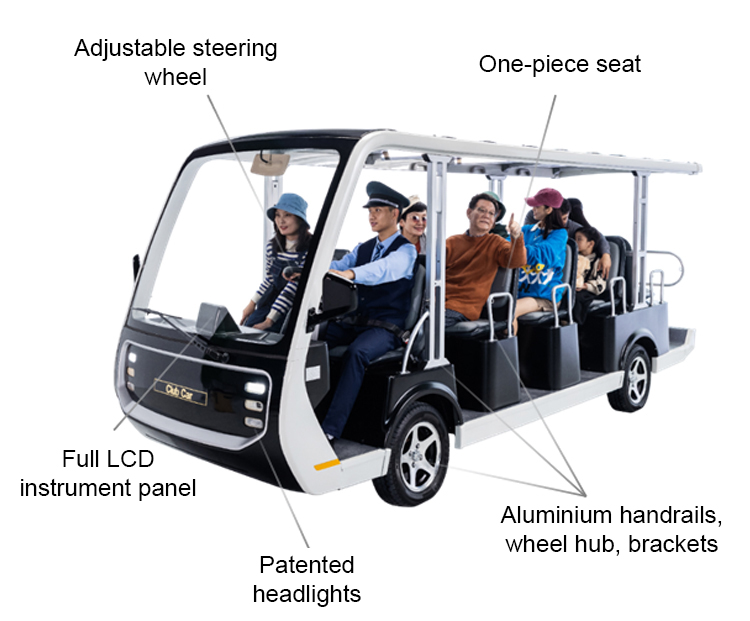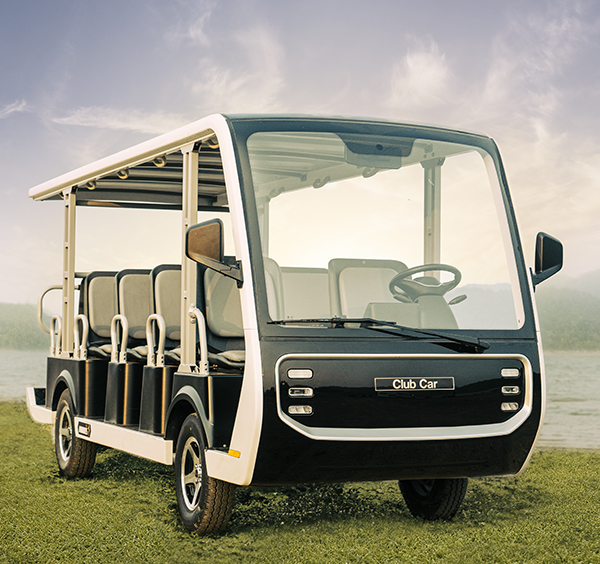The game of golf has transformed extensively from its historical origins as a leisurely game played across windswept Scottish coastal dunes. What was once a sport centered around meandering across expansive rolling landscapes on foot has evolved into the high-pace game enjoyed by millions globally today – enabled significantly by relentless innovation around golf course transportation technology.
In the humid climate of Southeast Asia, traversing long distances on foot while lugging heavy golf bags is a recipe for exhaustion and diminished play quality. Recognizing this challenge early on, golf courses began incorporating basic golf course mobility solutions to ferry players between holes. This allowed golfers to conserve their energy for the game itself.
But, as courses grew more extensive and player expectations rose, it became clear that standard golf carts were not enough. Players demanded comfort, amenities, and reliability akin to their luxury vehicles. Course owners sought fleet solutions that would not just transport golfers but enhance the experience and brand image of their clubs. The answer? Elevating their fleets with high-performance, feature-rich Golf Course Buggy Cars.
The Evolution of Golf Course Transportation
While buggy cars serve the straightforward function of carrying golfers around the course, their impact extends far beyond just point-to-point transportation. Today’s cutting-edge Golf Course Buggy Cars, like the Tempo 22 Transporter, are revolutionizing operations and economics across modern golf courses.
By providing reliable, efficient, and comfortable transportation, they allow courses to maximize player throughput and revenue generation. Their durability and low operating costs reduce maintenance overheads over time. And with bespoke branding and customization, they enable courses to deliver a personalized, premium experience that keeps golfers coming back.
Challenges Faced by Golf Courses
Golf Course Buggy Cars have become essential for providing convenient transportation that enhances both operations and player experiences at modern golf courses. However, effectively incorporating golf course mobility solutions into course fleet operations poses some core challenges that managers must proactively address.
Protecting Playing Surfaces
The movement of buggy cars over grass areas subjects the terrain and turf to inevitable mechanical wear and tear over time. So, ensuring vehicles stick to clearly defined paths and roadways as much as possible is crucial for minimizing potential damage to playing surfaces. This is especially important for parts of the course with more delicate grass types or that are prone to becoming waterlogged.
Establishing traffic management plans that prevent overcrowding of cars or tight turns on slopes can further reduce unnecessary turf impact. Monitoring high-traffic zones and periodically re-sodding worn areas helps sustain healthy turf.
Optimizing Maintenance Operations
Managing the upkeep, battery charging operations, and monitoring of a large fleet of Golf Course Buggy Cars requires implementing diligent management systems. Having adequate storage facilities and strategically mapping out charging station locations across the course gives maintenance crews easier access.
Usage monitoring and telemetry systems that track real-time vehicle metrics like distance traveled, battery charge status, and error codes aid in smarter charging and maintenance schedules. Adhering to rigorous preventative servicing schedules focused on electrical, mechanical, and aesthetic upkeep is vital for maximizing the operational availability and longevity of the fleet.
Prioritizing Safety
While serious accidents remain rare, buggy car usage does lead to a marginal increase in the risks of minor collisions or loss of control incidents that can cause injuries. Providing mandatory safety briefings and rules information for all players before buggy rental helps promote safe practices.
Common guidance areas include right-of-way expectations, avoiding overly sharp turns, adhering to designated speed limits, using handbrakes on slopes, and not standing up in moving vehicles. Clear and frequently reinforced signage related to potential hazards like steep gradients, water bodies, and intersections further encourages prudent actions.
For their part, managers must set risk mitigation policies limiting factors like alcohol consumption and mandating minimum driving age. Overall, instilling a culture focused on safety ultimately relies on education, alignment, and accountability across both players and course oversight teams.
The Benefits of High-Quality Golf Course Buggy Cars
By investing in innovative Golf Course Buggy Cars like the Tempo 2 Seater Electric, golf courses can transform fleet operations to drive revenue, guest satisfaction, cost efficiency, and competitive differentiation.
Improved Efficiency and Pace of Play
Reliable, comfortable, and efficient buggy car transportation directly enables faster throughput and play. This means more players on the course per day and greater revenue-generating potential from greens fees and F&B spending.
Enhanced Player Comfort and Satisfaction
Comfort-focused amenities like contoured seats, Bluetooth audio, and integrated coolers cater to guest preferences before, during, and after their round. The result is an elevated on-course experience and lasting positive perceptions.
Reduced Maintenance Costs
With their durability, low maintenance requirements, and advanced battery/charging management, eco-friendly golf carts deliver a lower total cost of ownership compared to standard golf carts over their lifetime.
Environmental Sustainability
Transitioning to quiet, emissions-free, eco-friendly golf carts powered by solar-supplemented charging enables courses to reduce environmental impact and showcase leadership in sustainability.
Choosing the Right Buggy Car for Your Course
Carefully evaluating the unique needs of your golf course is crucial for procuring the ideal buggy car fleet to meet operational, guest experience, and cost efficiency goals. Key facets to assess include:
Fleet Size and Composition
Determining the ideal number and mix of buggy cars is essential for ensuring smooth operations and meeting player demand, particularly during peak seasons in Southeast Asia. Course managers should analyze historical data, reservation systems, and on-course observations to understand the typical number of players during different times of the year.
For example, an 18-hole course stretching over 7,000 yards with average daily rounds of 100 players on weekdays and 225 players on weekends would need around 85 buggy cars, including 60 two-seaters, 20 four-seaters, and 5 maintenance carts.
In Southeast Asia, the peak golfing season often coincides with the dry months, typically from November to April. During this period, courses may experience a surge in player numbers, necessitating a larger fleet of carts to accommodate the increased demand. Managers should consider expanding their fleet during these months to avoid shortages and maintain a high level of service.
Conversely, during the wet season from May to October, player numbers may decrease due to less favorable weather conditions. In this case, courses may opt to reduce their active fleet size to minimize maintenance costs and optimize utilization. Having a flexible fleet composition that can adapt to seasonal variations is key to efficient operations in Southeast Asia.
Terrain and Climate Considerations
Golf courses in Southeast Asia face distinct challenges due to the region’s tropical climate, characterized by high temperatures, humidity, and frequent rainfall. These conditions can have a significant impact on the performance and durability of buggy cars, making it essential to choose vehicles that are specifically designed to withstand such environments.
Frequent rainfall also presents challenges for golf course transportation. Wet conditions can make the terrain slippery and difficult to navigate, increasing the risk of accidents and damage to the carts. To overcome this, courses should select carts with advanced traction control systems, robust suspension, and high-quality tires that provide excellent grip on wet surfaces.
Some cart models even feature rain covers or canopies to protect players from sudden downpours, ensuring an uninterrupted golfing experience.
Charging Infrastructure and Battery Management
For electric cart fleets, conducting an audit of existing electrical systems to identify capacity for new charging load is essential.
Strategically placed charging stations near storage locations enable convenient inter-round charging to optimize uptime.
Smart grid capabilities allowing time-based charging aligned with off-peak electricity rates can significantly reduce operating costs.
Customization and Branding Opportunities
Custom seating materials, club branding packages with specialized graphics/decals, accessories like ball/club holders, and more allow buggies to match aesthetic club identity and cater to player preferences.
Collaborating with buggy car vendors to evaluate available customization options compatible with target vehicle models based on intended purpose (guest transportation, course maintenance, etc) and standard features is recommended.
Maintenance and Support Services
Preventative maintenance programs consisting of scheduled buggy car servicing, parts replacement based on expected wear/lifecycle, and rapid issue resolution are essential for reliability.
Telematics tracking real-time vehicle performance metrics and battery health data enables highly optimized maintenance operations and fleet usage management.
Safety and Maintenance Best Practices for Buggy Cars
Ensuring the safety of players and maintaining the longevity of buggy cars are two critical aspects of golf course operations. By implementing and adhering to best practices in these areas, courses can provide a secure and enjoyable experience for their patrons while also protecting their investment in the fleet. Let’s explore some essential safety guidelines and maintenance best practices specific to the Southeast Asian context.
Safety Guidelines
- Operator Training: All buggy car operators should undergo thorough training before being allowed to drive on the course. This training should cover basic operation, safety features, speed limits, and proper parking procedures. In Southeast Asia, training should also include guidance on navigating wet or slippery terrain, which is common during the rainy season.
- Speed Limits: Clearly posted speed limits should be enforced throughout the course, particularly in high-traffic areas or near hazards. In Southeast Asia’s humid climate, it’s essential to maintain safe speeds to account for potentially slippery surfaces and reduced visibility during heavy rainfall.
- Passenger Capacity: Buggies should never be overloaded beyond their designated passenger capacity. Overloading can cause instability, reduce braking effectiveness, and increase the risk of accidents, especially on hilly or uneven terrain.
- Seatbelt Usage: All passengers should wear seatbelts whenever the buggy is in motion. This is particularly crucial on courses with steep inclines or declines, as the risk of rollover accidents is higher in these areas.
- Designated Paths: Buggies should stay on designated paths and avoid driving on tees, greens, or other sensitive areas of the course. In Southeast Asia, where heavy rainfall can soften the ground, it’s crucial to prevent damage to the turf by staying on paved or reinforced paths.
- Inclement Weather: During severe weather conditions, such as thunderstorms or heavy rainfall, buggy use should be suspended until conditions improve. Course staff should be trained to monitor weather patterns and communicate any restrictions or warnings to players promptly.
- Parking and Charging: Buggies should be parked in designated areas with the parking brake engaged and the key removed. When charging electric buggies, ensure that the charging area is well-ventilated and free from potential fire hazards, as the high humidity in Southeast Asia can increase the risk of electrical issues.
Maintenance Best Practices
- Regular Inspections: Conduct regular inspections of all buggy cars, checking for signs of wear, damage, or malfunction. In Southeast Asia’s humid environment, pay special attention to rust, corrosion, and electrical components that may be affected by moisture.
- Tire Maintenance: Regularly check tire pressure and tread depth to ensure optimal performance and safety. Replace tires when they become worn or damaged, as the frequent rainfall in Southeast Asia can make driving on worn tires particularly hazardous.
- Battery Care: For electric buggies, follow the manufacturer’s guidelines for battery maintenance, including proper charging, storage, and replacement intervals. In Southeast Asia’s hot climate, it’s essential to keep batteries cool and well-ventilated to prevent overheating and extend their lifespan.
- Lubrication and Rust Prevention: Regularly lubricate moving parts, such as steering and suspension components, to prevent rust and ensure smooth operation. In the humid conditions of Southeast Asia, moisture-displacing lubricants and rust-preventive coatings are used to protect exposed metal surfaces.
- Brake and Steering Maintenance: Regularly check and adjust brakes and steering components to ensure optimal performance and safety. The frequent rainfall and wet conditions in Southeast Asia can accelerate wear on these critical safety features.
- Cleaning and Drying: After each use, especially during the rainy season, thoroughly clean and dry the buggy to prevent the buildup of dirt, debris, and moisture. Pay extra attention to electrical components and storage compartments, as trapped moisture can lead to damage and foul odors.
- Scheduled Service: Follow the manufacturer’s recommended service schedule for oil changes, filter replacements, and other routine maintenance tasks. Partner with a reliable service provider that understands the unique challenges of maintaining buggies in Southeast Asia’s climate.
- Staff Training: Provide regular training to maintenance staff on proper buggy care, troubleshooting, and repair techniques. In Southeast Asia, this training should include specific guidance on addressing issues related to humidity, moisture, and corrosion.
- Record Keeping: Maintain accurate records of all maintenance activities, repairs, and replacements for each buggy. This documentation can help identify patterns, predict future maintenance needs, and ensure compliance with warranty requirements.
Choose Jebsen & Jessen for Your Golf Course Transportation Needs
Upgrading to innovative buggy car solutions can transform fleet operations to unlock new levels of golf cart efficiency, sustainability, and guest experiences at your golf course. As a trusted provider of specialized transportation solutions for over a century, we have the proven expertise to help you navigate this transition.
Our experienced consultants become deeply familiar with every aspect of your course operations in order to provide tailored guidance on adopting cutting-edge golf course mobility solutions matched to your strategic business goals.
Additionally, we offer complete support in upgrading your fleet over time as innovations emerge and operational needs evolve.
The objective is simple yet powerful – help leading golf courses like yours harness advanced transportation to reach new heights of economic performance, sustainability, and member/guest satisfaction through every phase of the ownership journey.
Get in touch with us today to discover how specialist guidance can fully unlock the multi-faceted potential of modern buggy car fleet solutions.




